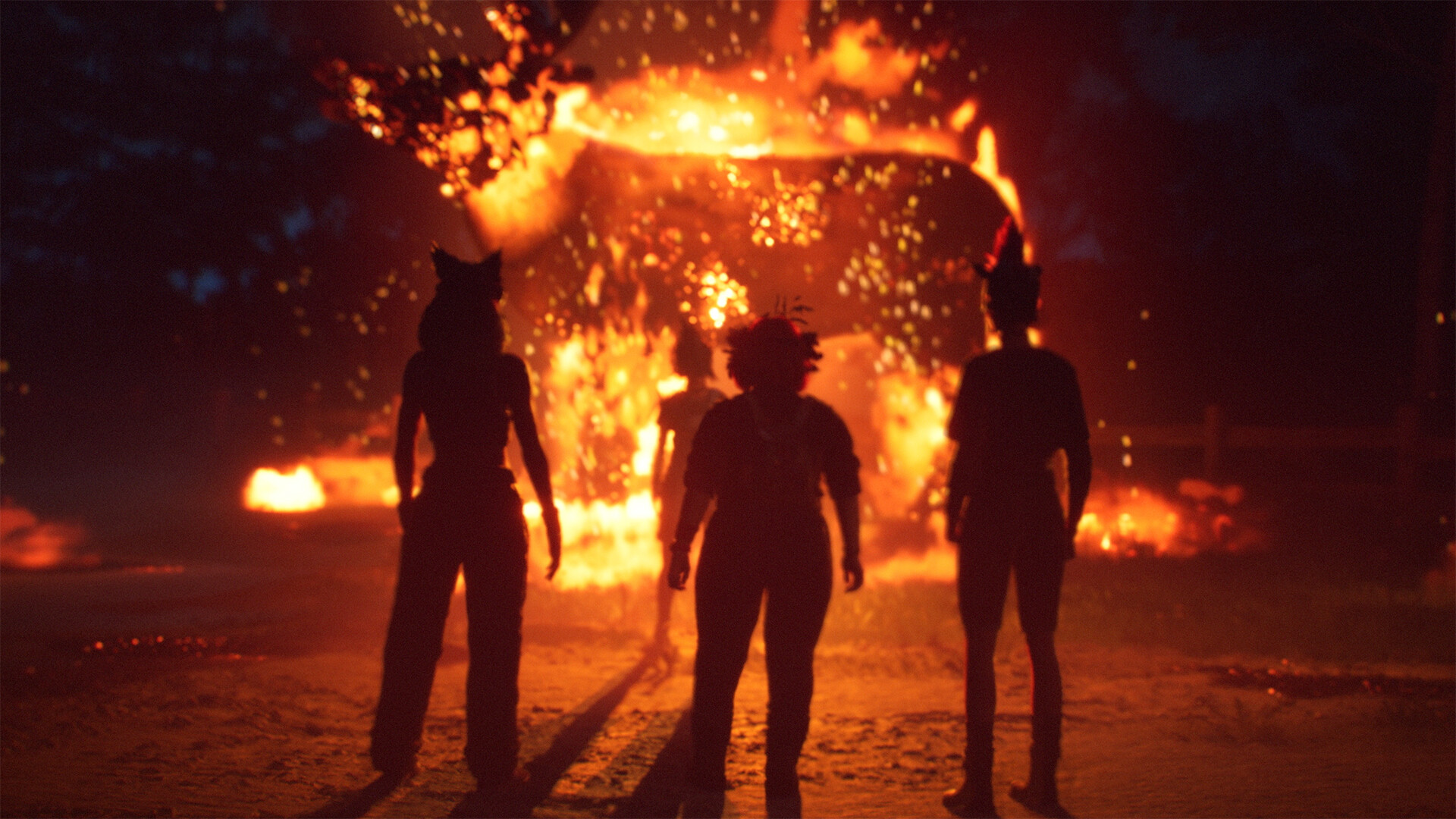"It felt like we needed to do something": How Varric Tethras went from nearly being left out of Dragon Age: The Veilguard to becoming a foundational character
Interview | Exploring the role of Varric Tethras in Dragon Age: The Veilguard with BioWare's creative director, John Epler

Over the years, many RPG companions have stolen my heart. But when it comes to dependable best friends, no one can compare to Varric Tethras. The dwarven rogue, storyteller, and occasional unwelcome tagalong – who I first met as Hawke in Dragon Age 2 – is one of my favorite BioWare characters. With his continued support and steadfast company in Dragon Age: Inquisition, my love for his witty, warm personality, and wisecracking, nickname-slinging ways has only grown since. Equipped with his signature crossbow and abundant chest hair, I was naturally elated to learn that Varric makes a return in Dragon Age: The Veilguard – but nothing could have prepared me for the role he would actually have.
Poignant and heartbreaking in equal measure, his companionship has never felt as meaningful as it does in The Veilguard. While he's an active party member in previous games, Varric acts from the sidelines in the latest RPG, becoming a mentor, confidant, and guide to Rook. From lending an ear as you vent your troubles, to offering encouragement and giving advice, his presence in the Lighthouse becomes such a grounding, comforting one that helps you carry the weight of becoming the leader of The Veilguard. As the story progresses, though, you'll eventually learn that not all is as it seems when it comes to Varric, but that only makes his part in your adventures all the more impactful. In fact, I'd argue that The Veilguard gives Varric his most vital role yet, and how it factors into the ending and overall theme of regret made the RPG for me.
Recently, I had the opportunity to talk at length about Varric's involvement in The Veilguard with creative director John Epler, and after hearing about the development of his story, I have an even greater appreciation for his presence in Rook's journey: "Varric is such a fan favorite, and has been part of Dragon Age since Dragon Age 2 – it felt like we needed to do something," Epler tells me. "At the end of the game, it's very clear that a chapter of Dragon Age is being closed, even as a new one is being started, and having Varric involved in the ending and that final beat in the way that he was felt right to us."
Warning: The below interview contains major Dragon Age: The Veilguard spoilers.
Regretful revelations
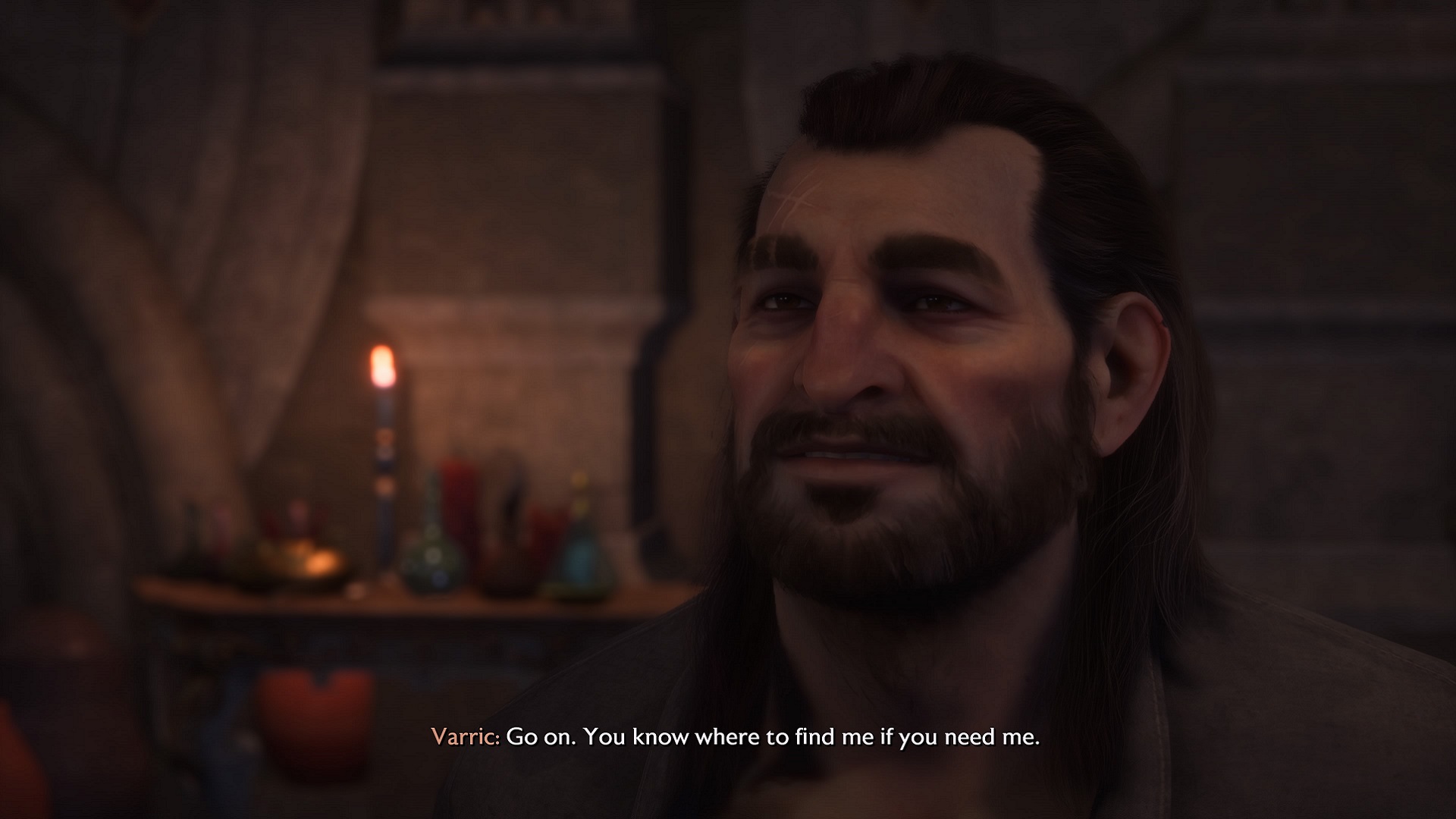
I haven't stopped thinking about Varric since I saw the credits roll on my first run of Dragon Age: The Veilguard. In the most memorable penultimate quest of Rook's adventure, you get pulled down into Solas' former prison in the fade, which is fueled by the game's central theme: regret. In a bid for freedom, you have to face your own remorse over past events head-on, but with that comes the saddest revelation of all. At the beginning of Veilguard Varric is stabbed in the chest by his old friend, and while it seems he survived by some miracle, it's revealed that he's only been living on in Rook's mind.
Through a mixture of Solas' manipulation and Rook's own denial, you're shielded from that fact. In certain respects, my own attachment is parallel to Rook's experience in that it stopped me from questioning how he survived – so deep was my desire for him to be alive and well. That meant that as my own character was having to come to terms with it, so was I. It's a deeply sad and powerful moment in the closing hours of the game that I'll never forget.
While it may have "felt right" for Varric to be in Dragon Age: The Veilguard and factor into its ending in this way, says Epler, it took some time for the team to come to that conclusion. With such a long development cycle, the loveable dwarf wasn't even part of the story at one stage.
Sign up to the GamesRadar+ Newsletter
Weekly digests, tales from the communities you love, and more
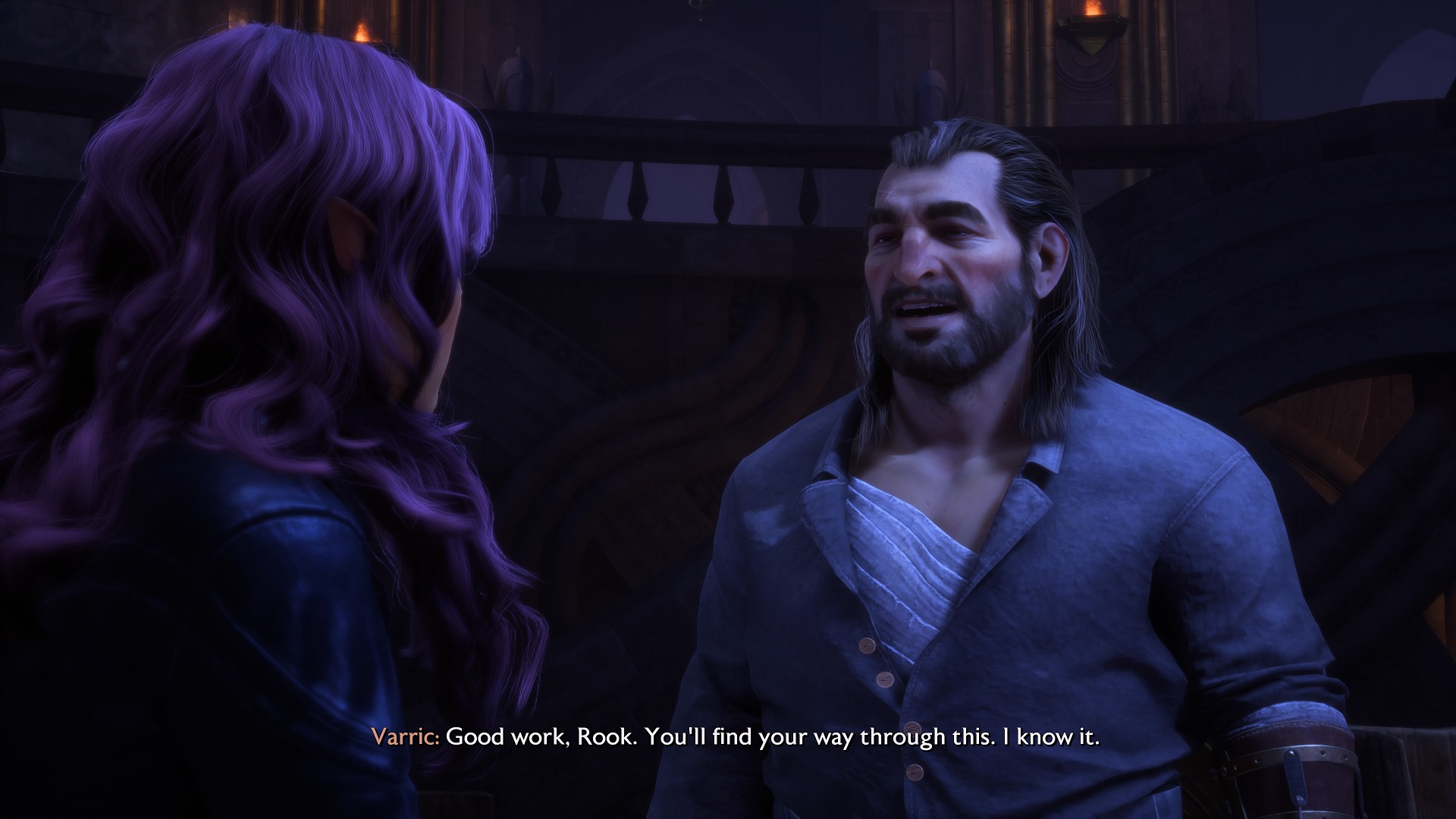
"It's interesting, because in some of our earliest versions of what we wanted to do for Dragon Age 4, Varric was not actually involved. Varric was doing his own thing as the Viscount of Kirkwall," Epler says. "But I think especially as we got to the version of Dragon Age: The Veilguard that shipped, it felt very strange to have a story about Solas not also include Varric. For us, having them [Solas and Varric] exist in contrast throughout the story - obviously, with Varric being something existing entirely in Rook's mind - provides different ways of looking at the core theme, which is regret."
As Epler explains, Varric is "not someone who does a good job of confronting his regret", whether that be in Inquisition when it comes to his love interest and crossbow namesake, Bianca, or with his brother in DA2. Rook, on the other hand, is forced to confront them, while Solas's regrets "drive everything he does." He's a character that "refuses to be happy, refuses to feel joy, because he feels it'd be a betrayal of his people, of what he's done".
But as Epler adds, having Varric "be the kind of linchpin" around which all the regrets hinge "felt powerful". Varric may not be good at confronting his own regrets, but his death and role eventually pushes Rook to face theirs, and in turn, you can try to help Solas get past his own if you so choose.
"I can't do this on my own"

Alongside the theme of regret, Varric is a character with a long history of offering support and encouragement to the heroes of previous games, making his role as a mentor in The Veilguard perfectly suit his character. His final request to Rook right at the beginning of the game says it all: "Look after the team for me". It may just be a single line, but it becomes a foundational guidepost for your role as the leader of The Veilguard, who can only fight against the ancient elven gods who threaten Thedas with the help of their companions.
Without a mark on your hand like the Inquisitor in Dragon Age: Inquisition, or an army you can bring together like the Grey Warden in Dragon Age: Origins, Rook is "just a person with a team", as Epler puts it, so you have to make sure that they're as ready as possible to face what's to come. Throughout The Veilguard, Varric constantly reminds of that fact, and offers reassurance when you need it most.
Epler says Varric felt like a natural character to juxtapose Solas. Acting kind of like "the angel and the devil on your shoulder", Solas - while not actually a devil - is the one who's more focused on the mission and goal of stopping the gods, while Varric constantly reminds you that your team matters and you need to take care of them first and foremost.
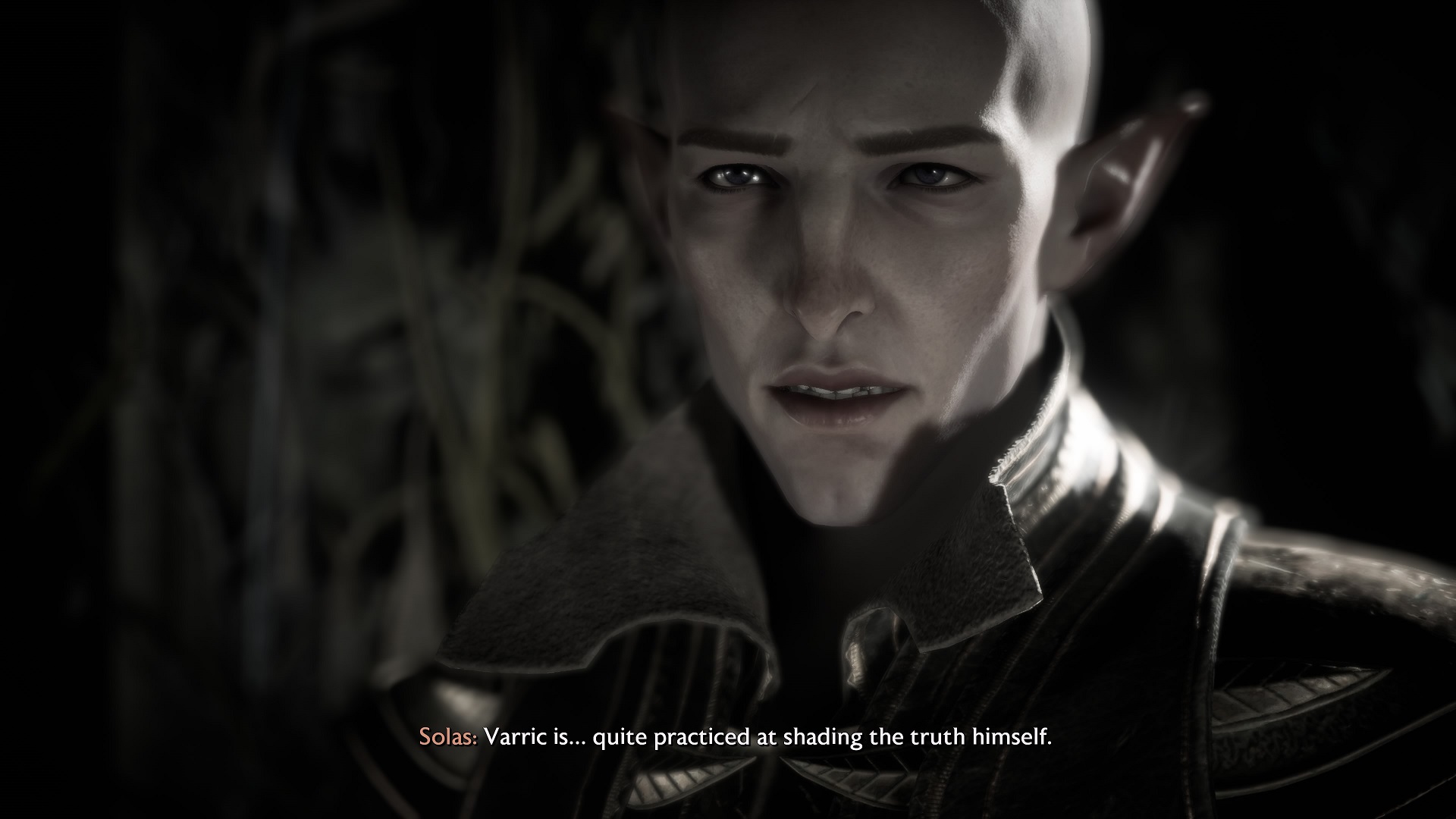
"Even Solas finds some comfort in knowing that there's still a piece of him out there"
John Epler, creative director
The decision to kill Varric early on was partly fueled by a worry that people would find Solas "a little too sympathetic in his goals". From past experience, Epler says the team saw a lot of that with The Trespasser DLC, where many really wanted to help Solas and believed he was right. But he is going to end the world, after all, and once you realize the twist about Tethras' true fate, Varric serves to demonstrate that "Solas will sacrifice almost anyone or anything in pursuit of what he sees as the greater good."
But even if he is willing to go to extreme lengths, Solas does still regret what happens to his old friend. In fact, Epler explains that he even finds it comforting to think that Varric is still out there in some form.
"Varric's a complex character," says Epler. "He runs away from his problems, he likes to shade the truth, even to the people that he's working with. The Varric that you see, the Varric that Rook experiences, [are] the best parts of Varric that Rook remembers. It's just this mentor figure that's always there for them. And I think even Solas finds some comfort in knowing that there's still a piece of him out there, even though he knows that it's manipulation, it's not the real Varric."
Fond farewells
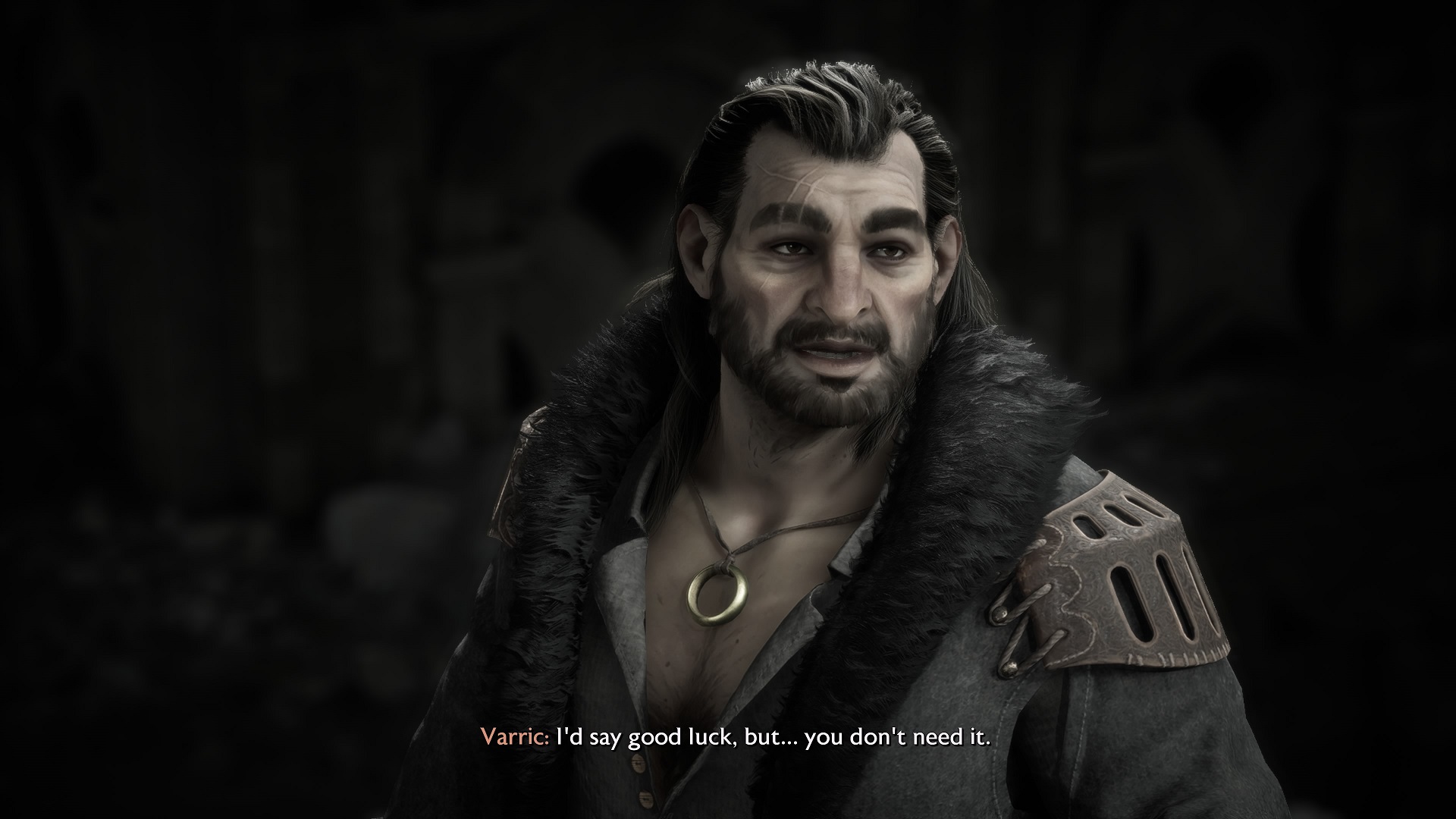
I'm still coming to terms with the fact that I had to say goodbye to Varric, but as send-offs go, The Veilguard did him justice. But just like his role shifted to tie into the game's theme, so too did his death. While Varric dying was something the team thought about early on in the more recent version of the story, they ran into a familiar problem that took them back to the days of Dragon Age 2.
"DA2 starts with a character death about 45 minutes in, when your siblings dies. And the feedback we got, which was very fair feedback is, 'okay, but I don't care, because I've known this person for like, 45 minutes'. So having Varric die at the beginning, originally that was it. He was going to die, and it was going to be this big, shocking moment," Epler says. "But part of the problem with making a game 10 years after the last one, and needing to make it so existing players – but also new players – can get in and feel a lot of the same things, is you can't bank on two games worth of built up memories, built up attachment, to make the death land. For a lot of players it would have been like, 'okay, but I've only known this guy for 45 minutes. So why do we care?'"
In order to still have the death at the beginning of the game, the team eventually landed on the idea of his not-so-real presence in the Lighthouse in order to give players more time with Varric. "And that's the beauty of game development," Epler adds,"something that you start off with as a way to solve a problem actually becomes so core to the identity game."
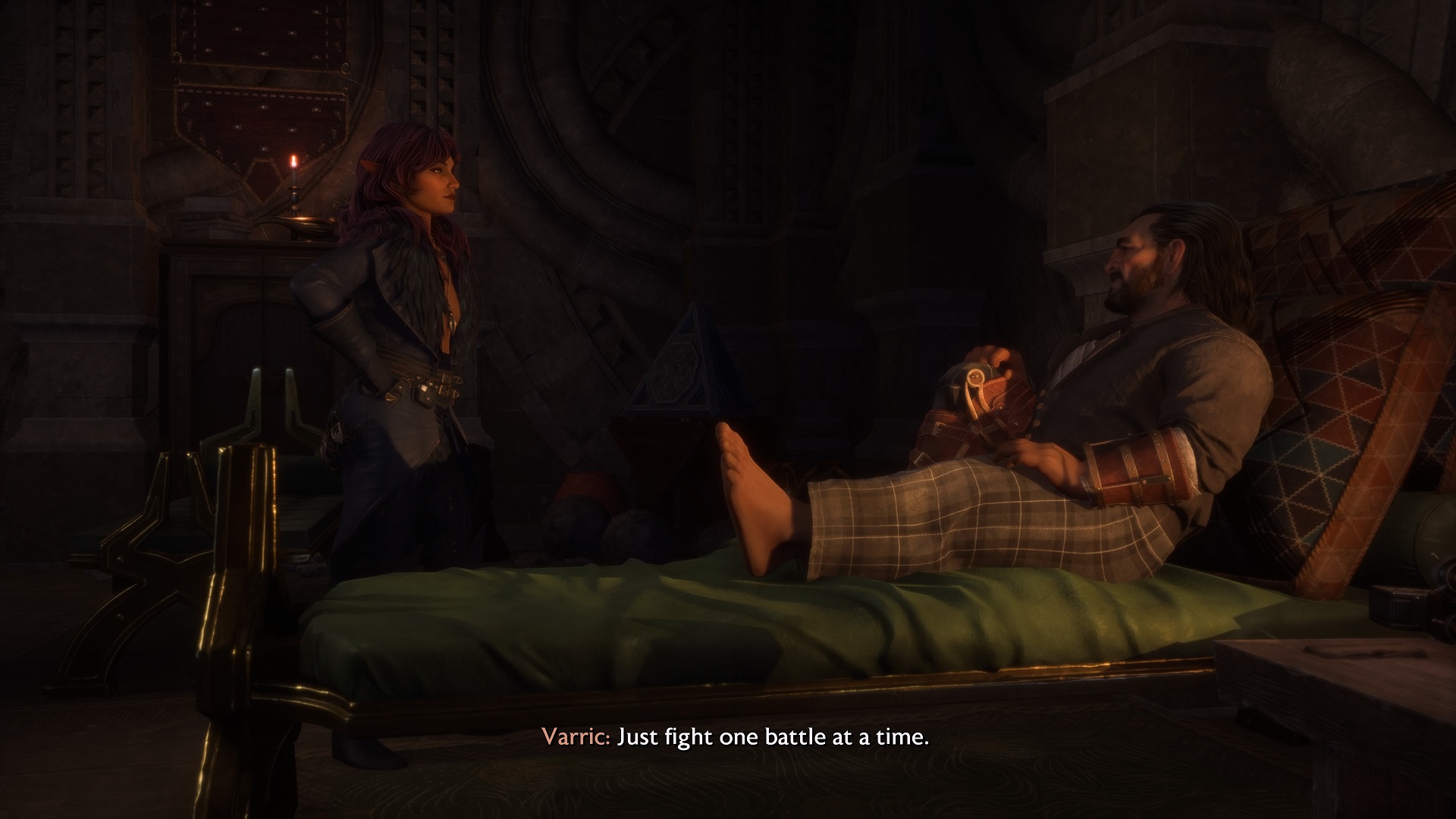
Varric Tethras was originally brought to life by Mary Kirby, a veteran developer who has worked on the Dragon Age series for many years at BioWare. Sadly, she was part of the layoffs last year, but as Epler fondly highlights, Kirby wrote the vast majority of the conversations you have with Varric.
"She was one of the first people we told 'Hey, so we're talking about killing Varric, you're okay with this, right?' Because at that time, she wasn't even on the project," Epler says. "But Mary was fantastic to work with, she and I worked [together in the past]. I was Varric's cinematic designer for Inquisition and for DA2. There are a couple of things that came up towards the end of the project that I had an opportunity to write. And it was lovely to remind myself how Mary had always written Varric, and how that character came together."
Varric's role as a guide, mentor, and cheerleader for Rook, has become such a great source of comfort for me. In fact, one of his sayings – "one battle at a time" – is something I think about during tough days when many tasks are hanging over me. Above all, I'll never forget the experience of saying goodbye to Varric in Dragon Age: The Veilguard. "I had a good run," Varric says in the fade before departing for good. And when I think about everything I've been through with him at my side in the world of Thedas, I can't help but agree. Just as he lived on Rook's mind, he'll live on in mine forever.
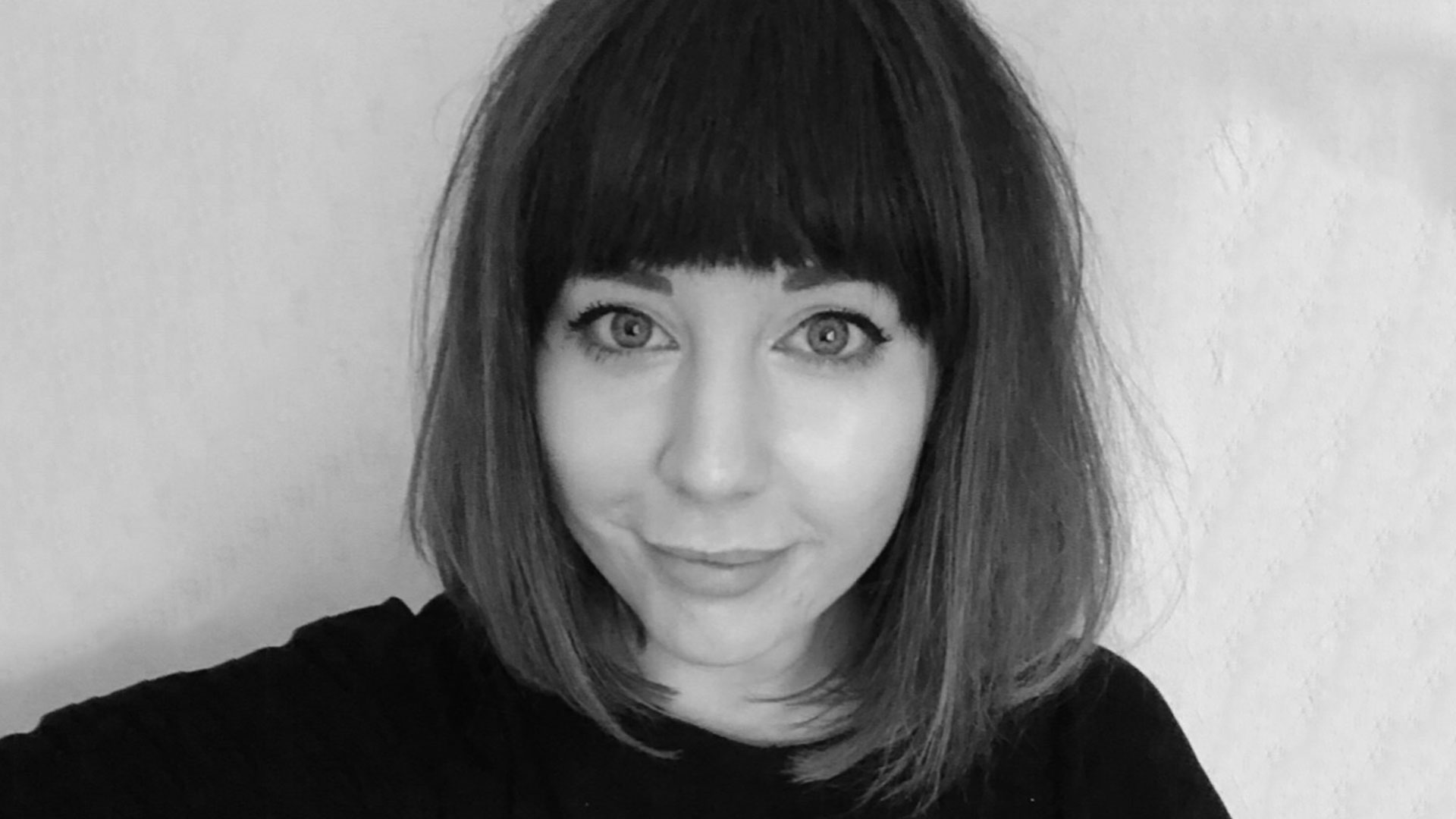
I started out writing for the games section of a student-run website as an undergrad, and continued to write about games in my free time during retail and temp jobs for a number of years. Eventually, I earned an MA in magazine journalism at Cardiff University, and soon after got my first official role in the industry as a content editor for Stuff magazine. After writing about all things tech and games-related, I then did a brief stint as a freelancer before I landed my role as a staff writer here at GamesRadar+. Now I get to write features, previews, and reviews, and when I'm not doing that, you can usually find me lost in any one of the Dragon Age or Mass Effect games, tucking into another delightful indie, or drinking far too much tea for my own good.

